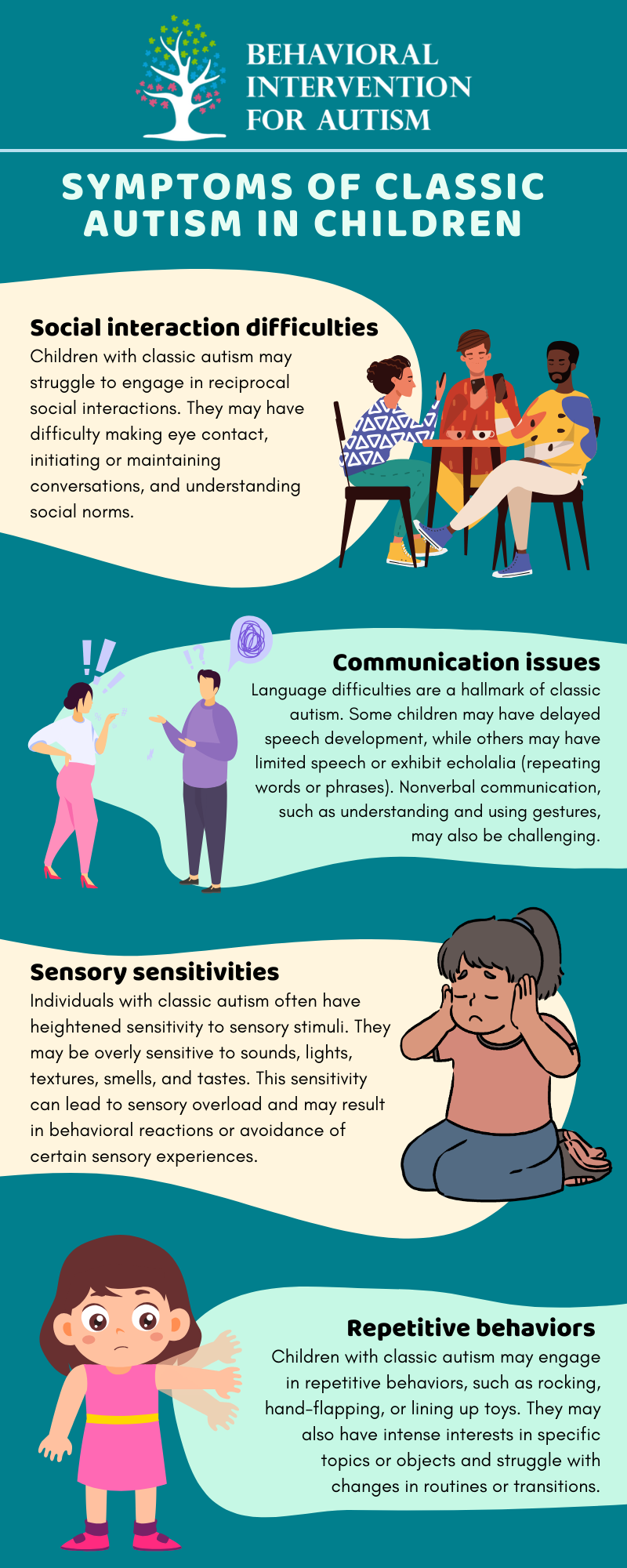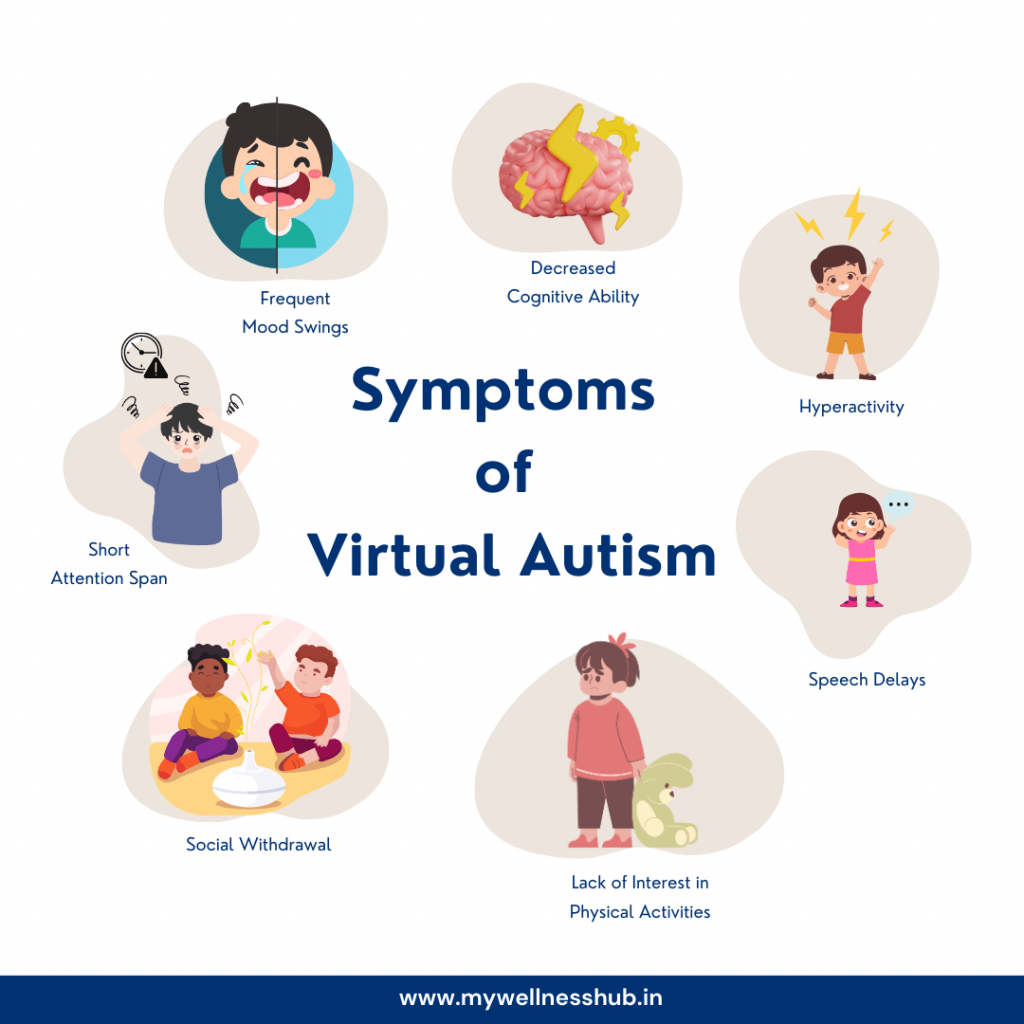Talking about ASD with siblings—tips from an Aba Therapist Near Me
Talking about ASD with siblings—tips from an Aba Therapist Near Me
Blog Article
Recognizing the Influence of Behavioral Autism on Day-to-day Live and Social Communications
You might not recognize how deeply behavioral autism impacts daily life and social communications. People on the range usually browse a world filled with communication hurdles and sensory overload. These difficulties can lead to aggravation and seclusion, affecting their partnerships and overall wellness.
Specifying Behavior Autism and Its Attributes
Behavior autism, typically referred to as autism spectrum problem (ASD), encompasses a series of conditions identified by challenges in social interaction, interaction, and recurring habits. You may discover that people with ASD usually have a hard time to translate social cues, which can bring about misunderstandings in conversations. They may discover it difficult to establish eye contact or take part in little talk, making social circumstances feel overwhelming.
Communication troubles can manifest in different ways, from delayed speech development to a choice for using less words. By acknowledging these qualities, you can promote an atmosphere that advertises acceptance and motivates effective interaction, aiding individuals with autism thrive in their daily interactions.
The Spectrum of Autism: Recognizing Irregularity in Actions
Autism spectrum problem (ASD) isn't a one-size-fits-all diagnosis; it differs widely among individuals. You may discover that some people with ASD exhibit light signs, while others may deal with a lot more substantial obstacles. This variability can show up in habits, passions, and sensory level of sensitivities. You may come across people that are very verbal and engage quickly in discussions, while others could like singular activities or communicate non-verbally.
In addition, the means individuals with ASD reply to sensory input can vary significantly; some might be bewildered by loud noises or bright lights, whereas others grow in boosting atmospheres. The spectrum likewise includes differences in social interactions; some people may have a hard time to translate social signs, while others navigate social setups with loved one simplicity. Comprehending this irregularity is vital, as it aids you value everyone's one-of-a-kind experience and dressmaker assistance to their particular needs, cultivating a much more comprehensive environment for everybody.
Interaction Challenges Encountered by Individuals With Autism
When you interact with individuals on the autism spectrum, you might observe their special communication challenges. They typically encounter troubles with both verbal and nonverbal signs, which can affect their social interactions. Comprehending these barriers is crucial for promoting better connections and support.

Verbal Communication Troubles
Many people on the autism range experience verbal interaction problems that can substantially impact their everyday interactions. Your speed, tone, or volume could not straighten with social expectations, creating others to misunderstand your intents. Identifying these difficulties can aid you and your assistance network develop techniques to enhance communication and foster much better connections with others in your day-to-day life.
Nonverbal Interaction Barriers
Spoken communication isn't the only difficulty people on the autism range face; nonverbal communication barriers can be just as substantial. You might find it hard to analyze body movement, faces, and eye call, which are vital for effective communication. These obstacles can result in misunderstandings or misconceptions of social hints, making communications really feel overwhelming or complicated. You might battle to express your own emotions with nonverbal ways, leaving others unsure of your purposes or feelings. This disconnect can create feelings of isolation and irritation. Acknowledging these obstacles is important for cultivating understanding and empathy in your communications. By addressing nonverbal communication, you can find techniques to enhance your social experiences and boost your total quality of life.
Social Interaction Influences
Social interactions can frequently feel frustrating due to the special interaction difficulties encountered by individuals with autism. Recognizing these challenges can help you discover methods to improve communication, such as exercising social skills in risk-free setups or utilizing aesthetic help. Recognizing your needs enables you to navigate social interactions with greater self-confidence and convenience.
Social Communication and Connection Building in Autism
While building connections can be challenging for individuals with autism, comprehending their unique viewpoints and communication styles can foster purposeful links. You could see that lots of individuals on the spectrum prefer direct communication and might fight with social signs or small talk. By being straightforward in your interactions, you can help create an environment where they really feel comfy.
Put in the time to pay attention and observe just how they reveal themselves. This understanding can assist you in guiding discussions a lot more effectively. Engaging in shared passions can also serve as a bridge to deeper links. Whether it's a pastime, a favored program, or a common interest, these typical strings can open doors to friendship.
Day-to-day Live Routine: Browsing Obstacles and Techniques
Steering life routines can be especially challenging for individuals with autism, specifically when unexpected changes take place. You may locate comfort in having an organized schedule, as it aids you anticipate what's following. It's regular to feel distressed or overwhelmed when interruptions occur. To navigate these challenges, consider executing visual routines or lists. These tools can offer quality and reassurance.
Developing a regimen that consists of sensory breaks can also be helpful. You can prepare brief breaks throughout your day to reenergize. It's necessary to communicate with those around you, allowing them understand your preferences why not try these out and requirements. This assists develop an understanding atmosphere.
Last but not least, practice mindfulness strategies to handle stress and anxiety and stress and anxiety. Basic breathing workouts or grounding strategies can make a considerable difference. By integrating these methods, you can improve your day-to-day routine and reduce disruptions, making life feel more convenient.
Staminas and Capacities of People on the Autism Range
Recognizing life routines is simply one element of the autism experience. Many people on the autism range have amazing staminas and capabilities that set them apart. You might find that your attention to information is outstanding, allowing you to master tasks that need accuracy and focus. Your capability to believe outside the box can cause innovative services in various situations.
In addition, your memory skills typically radiate, especially in locations of rate of interest. Autism Behavioral Therapy. This flair for retaining info can make you an important resource in fields like modern technology, scientific research, or art. You may also show solid aesthetic thinking, enabling you to envision complicated ideas and solve problems creatively
Additionally, your special viewpoint on the world can cultivate empathy and understanding in others, enriching social communications. Welcoming these toughness not only increases your self-confidence however likewise helps others value the varied abilities you give the table.
Producing Comprehensive Atmospheres for Individuals With Autism
Producing imp source comprehensive atmospheres for people with autism starts with making sensory-friendly spaces that deal with their distinct requirements. You can likewise promote opportunities for social communication, helping to develop connections and relationships. By making these adjustments, you'll contribute to a much more welcoming environment for everyone.
Designing Sensory-Friendly Spaces
While making sensory-friendly spaces, it's vital to review the special demands of people with autism. Begin by choosing soothing shades and soft illumination to create a relaxing setting. When overwhelmed, incorporate quiet zones where individuals can pull away and charge. You'll intend to lessen loud noises and distractions, making use of soundproof materials or white sound makers to assist preserve serenity. Take into consideration tactile components like soft textiles or fidget-friendly items that can give convenience. Establish that spaces are flexible, enabling simple rearrangement to accommodate various activities. Finally, consist of visual schedules or clear signs to help people navigate the area with confidence. By attentively incorporating these components, you can produce an inviting atmosphere that supports sensory needs and advertises general health.
Promoting Social Interaction Opportunities
Creating sensory-friendly spaces not just addresses individual convenience yet likewise sets the phase for purposeful social communications among people with autism. Urge peer mentoring, coupling individuals with autism with helpful peers who can assist them with social situations. By executing these methods, you can improve social chances, aiding individuals with autism construct relationships and enhance their social abilities in a safe, welcoming setting.

Frequently Asked Concerns
How Can Buddies Assistance A Person With Behavioral Autism?
You can support a pal with behavior autism by being patient, listening actively, and valuing their boundaries. Take part in activities they take pleasure in, connect freely, and produce a comfortable setting where they feel valued and understood.
What Resources Are Readily Available for Moms And Dads of Children With Autism?
You can explore various sources for parents of kids with autism, including support system, academic internet sites, and regional neighborhood services. Linking with various other moms and dads can also offer beneficial insights and shared experiences to aid navigate challenges.
Can Behavioral Autism Modification With Time?

Yes, behavioral autism can transform in time. You might see shifts in interaction, social abilities, and actions as your kid expands. Early intervention and assistance typically play crucial roles in these developing changes.
Just How Do Sensory Level Of Sensitivities Influence Life?
Sensory level of sensitivities can make day-to-day experiences overwhelming. You could deal with intense lights or loud sounds, causing stress and anxiety or evasion. Finding atmospheres that fit your requirements can substantially boost your convenience and overall every day life.
What Prevail Misconceptions Regarding Behavioral Autism?
You may think behavioral autism only affects communication skills, but it's even more complex. Numerous assume individuals lack compassion or knowledge, which isn't real. Comprehending these misconceptions assists foster approval and support for those on the range.
Behavior autism, usually referred to as autism range condition (ASD), incorporates a variety of conditions identified by difficulties in social communication, interaction, and repeated behaviors.Social communications can usually really feel frustrating due to the distinct interaction obstacles encountered by individuals with autism.Designing site sensory-friendly spaces not only addresses specific comfort yet additionally sets the phase for meaningful social communications amongst people with autism. Urge peer mentoring, combining individuals with autism with encouraging peers that can guide them via social circumstances. By implementing these approaches, you can improve social opportunities, assisting individuals with autism construct relationships and reinforce their social abilities in a secure, welcoming atmosphere.
Report this page